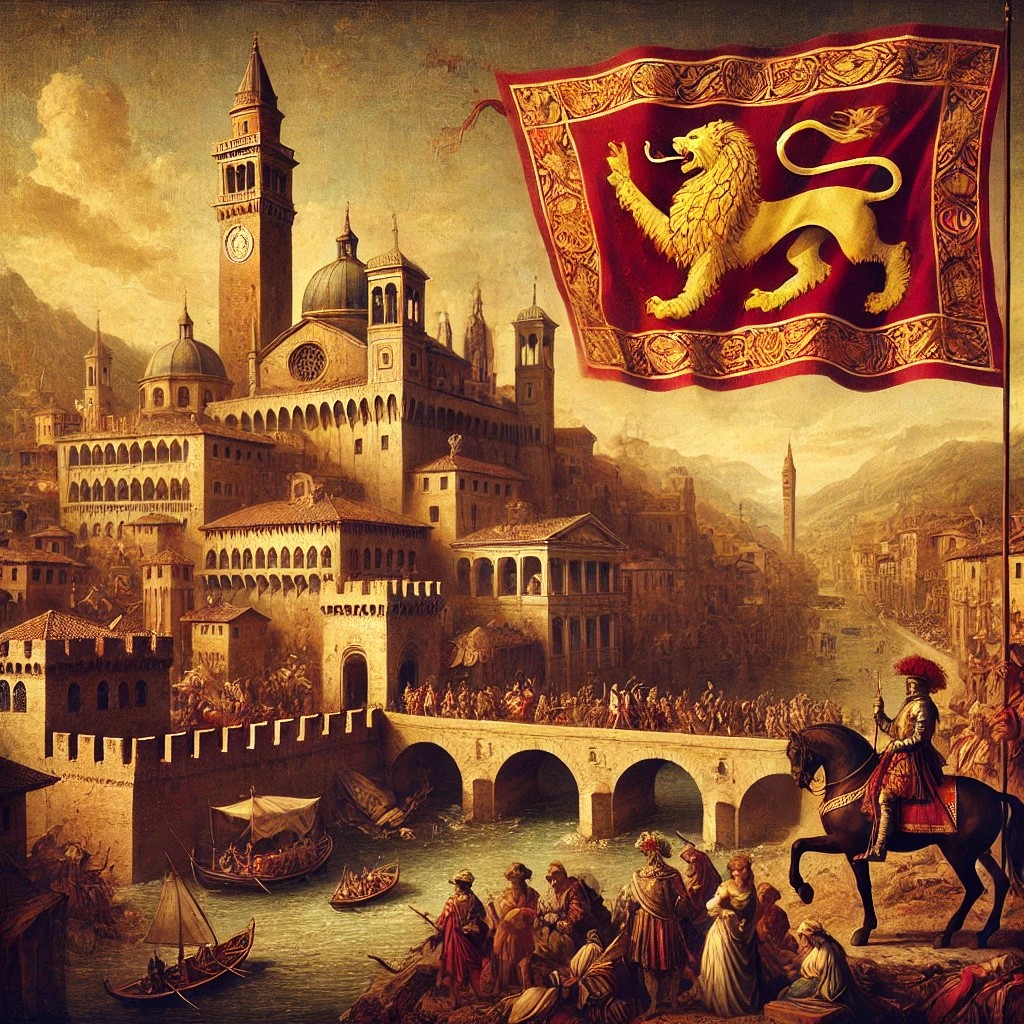Bergamo in the Serenissima Republic of Venice (XV - XVIII)
The prosperity of Bergamo under Venetian rule

The city of Bergamo is famous for its history rich in art, culture and political innovation and still represents a fundamental centre in the economic and political infrastructure of contemporary Italy. Its period of greatest splendour, however, undoubtedly began with Venetian rule, which characterised its history for almost four centuries - Image generated with AI
The city of Bergamo is famous for its history rich in art, culture and political innovation and still represents a fundamental centre in the economic and political infrastructure of contemporary Italy. Its heyday, however, undoubtedly began with Venetian rule, which characterised its history for almost four centuries.
At the beginning of the 15th century, northern Italy was a disputed territory between the two greatest powers of the time: the Duchy of Milan and the Republic of Venice. Bergamo, thanks to its strategic position in the heart of the Po Valley, soon became the centre of the ambitions of these two powers. After years of bloody clashes, the Venetians finally prevailed over the Milanese and, from 1428, the city became part of the vast organisation of the Venetian Republic.
It was thus that some of the most tangible symbols of Venetian rule began to spread through the city, including the system of walls and fortifications built between 1561 and 1595, the so-called ‘Mura Veneziane’ (Venetian Walls), now a UNESCO World Heritage Site. These walls were never conquered and embody the efficiency of Venetian military engineering that successfully protected the upper city and its wealth.
Venetian rule also favoured the development of the city's commerce, centred on the processing of wool, silk and leather. Thanks to Venetian trade networks in the Mediterranean, Bergamo benefited from privileged access to markets. Along with trade, the arts flourished and Venetian Renaissance and Baroque taste spread through the city, as can be seen in the work of painters such as Lorenzo Lotto, author of some of the decorations in the church of San Bartolomeo.
Venetian rule over Bergamo came to a tragic end in 1797 when Napoleon Bonaparte's advance into Italy sanctioned the end of the Most Serene Republic of Venice by ceding its territories to the Austrian Empire. In spite of its end, the centuries of Venetian rule over Bergamo left their mark and still today the soul of the people of Bergamo approaches the legacy of the Serenissima in their industriousness.
Claudio Visentin e Gianluigi Della Valentina. Storia di Bergamo: Dalle origini ai giorni nostri. Pordenone: Edizioni Biblioteca dell'Immagine, 2021.
Gaetano Greco e Mario Rosa. Storia degli antichi stati italiani. Roma-Bari: Laterza, 1996.
Carlo Capra. Storia moderna (1492-1848). Milano: Mondadori Università, 2020.
Toniatti Francesco
Master of Arts in International Relations - University of Leiden
Master of Arts in History and Oriental Studies - University of Bologna
Former History Teacher - International European School of Warsaw
2025-10-12
Francesco Toniatti
